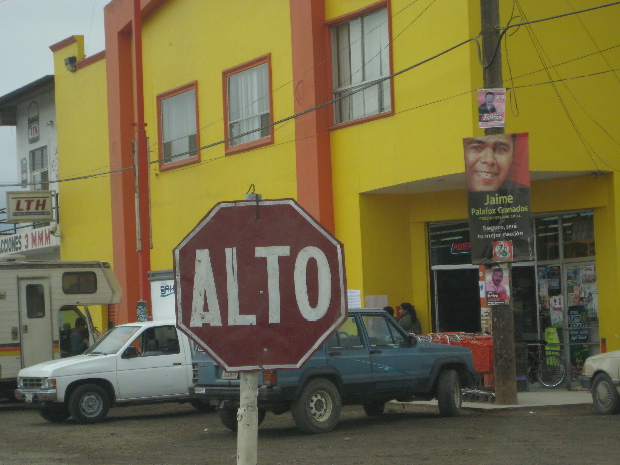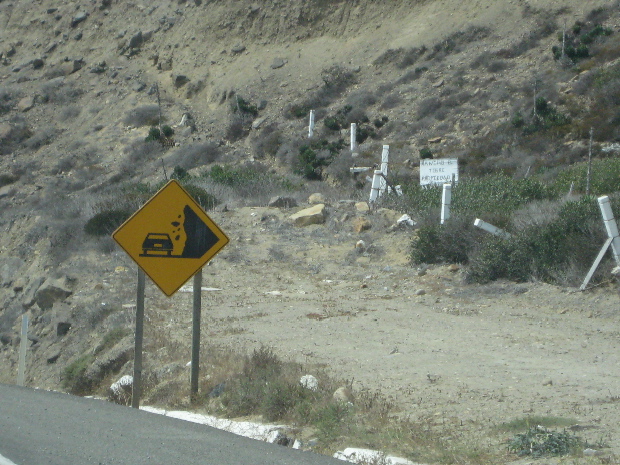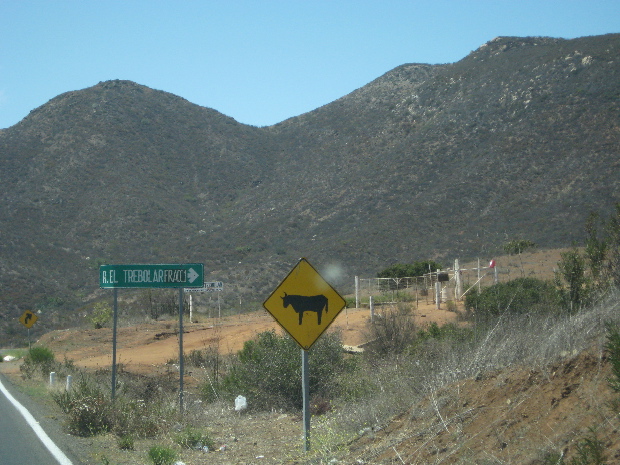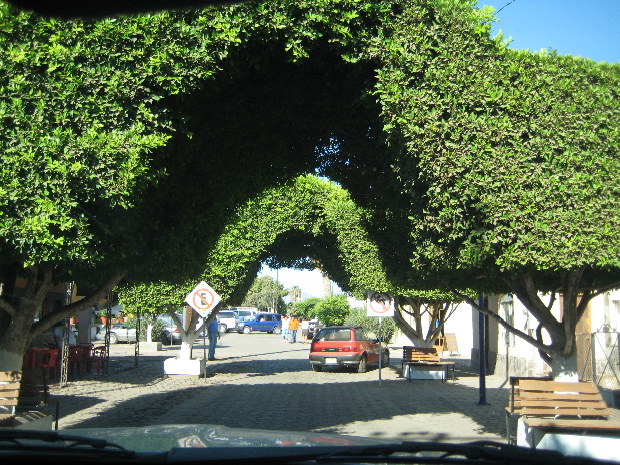
There's
really no way to explain this precisely, but driving in Mexico is
different from driving in the States. Mexicans don't follow
roadsigns or rules except in the vaguest sort of way — they respond to
the behavior of other drivers. At an intersection with four-way
stop signs, a Mexican driver, if he or she thinks there's time, will
scoot through on the cross street ahead of you without stopping at all
— you are expected to expect this and react accordingly.
Anything is permitted between drivers as long as it makes sense.
It's more like navigating a crowded sidewalk as a pedestrian than
driving on streets and highways north of the border. In other
words, it doesn't work if people aren't instinctively respectful of
other people's space and right of way.

I came to enjoy driving in Mexico very much — it was always an
adventure and always interesting, because it required you to pay
attention to other drivers, to imagine what they were thinking.
It was disturbing to drive in Las Vegas afterwards. I found it
almost impossible to imagine what other drivers were thinking —
because they usually weren't thinking at all. Cell phones are a
big part of the problem here — in Mexico it's illegal to drive while
talking on a cell phone, and people, at least in Baja California, don't
do it. Not, I suspect, because it's against the law, but because it's not
sensible. In general, drivers in the States rely on lanes and
signs and signals to avoid collisions with other cars. In Mexico, you have
to rely on a careful anticipation of how others are going to behave — and sometimes of how livestock are going to behave.

On a related note, streets signs are posted very spottily in Mexican
towns, even in big towns like La Paz. You can't navigate by them,
even with a reliable map. This requires stopping often to ask
directions — an occasion for a social interaction that is almost
always pleasant. Why put up street signs when you can have a
friendly interchange with a human being who will tell you how to get
where you're going, and the best way to get there?

Once we got caught in a maze of street construction in Loreto.
There were policemen posted at all the intersections with
detours. When you asked one how to get to Mexico 1, he would
point vaguely in a certain direction — “That way.” Eventually,
that way would lead you to another policemen, who would tell you to go
“up there.” At last you'd find yourself back on a familiar
street, heading for Mexico 1. Why complicate things with
elaborate directions, much less with temporary signs, when there are
enough officers around to give you the part of the puzzle you need at
any given moment?
It should be noted that the police in Mexico do enforce the driving
laws. Contrary to popular belief they don't target tourists, but
they don't give them a pass, either. Noting the presence of
police is part of the acute environmental awareness necessary for
driving in Mexico.
For previous Baja California trip reports, go here.
[Photos © 2007 Harry Rossi]
